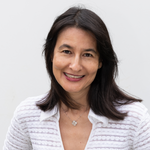The Japanese are known for their longevity as a population in spite of widespread smoking and drinking among their equally famous 'salarymen,' but once you leave the big cities and head into the countryside, the slower pace of life synced with the seasons, tight social networks and an incredibly nutrient dense traditional diet combine to support one of the best anti-aging and timeless beauty regimens in the world. One only has to look at Japanese women, who are famous for their ageless glow, to see the benefits.
Let's take a closer look at the diet underpinning the healthspan and vitality of older Japanese.
1. Natto: Spermidine for Hormonal Balance, Beauty & Healthspan
While most Westerners are familiar with tofu, very few know the distinction between non-fermented, fermented and long-fermented tofu. The latter is a delicacy akin to aged Stilton cheese - with a smell and unusual texture to match!
While it might not sound appetizing, as a food source, natto has the highest concentration of a potent anti-aging compound known as spermidine. Eaten regularly by the famously long-lived residents of Okinawa, Okinawan natto is aged for a year in limestone caves to increase the spermidine content. Spermidine is known for its ability to stimulate autophagy [1], a cellular renewal and recycling process that keeps every cell in the body young, whether skin, hair and nails or heart, brain and lungs. So important is the mechanism of autophagy to our survival and healthspan, that the Japanese scientist who discovered its mechanism of action, Yoshinori Ohsumi, won the 2016 Nobel Prize in Physiology or Medicine for his work. It has also been found to inhibit 9 of the 12 hallmarks of aging (the pathways through which your body ages) [2].
In clinical studies in animals or humans, benefits have been shown in:
- hormonal balance and regulation
- heart health
- brain health
- lung health, in particular for those suffering from Chronic Obstructive Pulmonary Disease as well as those with asthma
- hair growth
If you want to experience the benefits of spermidine without tracking down (and stomaching!) natto, make things a little easier by trying our wholly food-derived spermidine supplements...
2. Green Tea with Polyphenols for Microcirculation, Healthy Skin & Cellulite
Green tea and in particular matcha, the ceremonial grade green tea used in Japanese temples, are high in amino acids, phytochemicals, enzymes and especially polyphenols [3]. They are particularly rich in a type of polyphenol called epigallocatechins (EGCG) which inhibit free radicals, thereby reducing wrinkles and sagging skin while promoting micro-circulation and overall radiance.
If this weren't enough, green tea also has the following benefits [4]:
- reduces the appearance of cellulite
- increases the production of Super Oxide Dismutase (SOD), a powerful antioxidant that protects against gray hair
- reduces Reactive Oxygen Species (ROS)
- has photo-protective properties to prevent the appearance of age spots
- inhibits enzymes that promote aging
- decreases sebum production
- reduces dandruff
3. Jellyfish and Collagen for Skin & Slimming
If you have ever been to a Korean football match, you will notice that instead of eating hot dogs like American stadium goers, Korean fans will be noshing on something dry, stringy and pale: dried jellyfish.
This savory snack is popular among children and adults and is the dried version of 'rubber bands,' a jellyfish appetizer dish made with slightly pickled and thinly sliced cucumber, carrots and ginger and sprinkled with sesame seeds. Both of these jellyfish dishes are packed full of collagen, needed as the scaffolding for our skin.
Like all collagens, jellyfish has the amino acids glycine, proline, and glutamate, but also arginine, which improves blood flow. Jellyfish has a high protein content, but low calorie count, which also means that it fills you up without filling you out. In East Asia, it's known for its slimming properties, ability to support joints, tendons, and ligaments [5], and to improve skin health [6].
4. Seaweed for Thyroid Health & Melanin
Most Americans know seaweed from sushi, but it's even more of a culinary staple in Japan where kombu, a thicker form of seaweed, is used when boiling rice or making broth to add both richness of flavor, vitamins and minerals, including iodine, which is necessary for proper thyroid function, and tyrosine, needed for making melanin or pigment in hair [7].
5. Umeboshi Plums for Collagen & Antibacterial Support
These pickled, dusky pink plums are another common Japanese kitchen staple. They have a high amount of polyphenols which support collagen production, but they also contain a lot of citric acid, shown to inhibit the bacteria, H pylori, which is known to cause stomach cancer, ulcers and can even lead to gray hair [8]. Ume plums, which are related to apricots, are harvested in June and then pickled and preserved. They're typically eaten with white rice as a foil to their extremely mouth-puckering sour taste.
6. Sesame Seeds with Oleic Acid for Healthy Skin
Furikake (pronounced 'fur-ih-kah-kay') is one of the most common condiments in Japan. Made from a mixture of black and white sesame seeds, seaweed flakes and dried ume shiso, this adds just the right amount of contrasting salty, sour and mellow flavors to spice up a plain rice dish, but those sesame seeds are packed with healthy oleic acid, just as in olive oil. Oleic acid famously soothes and repairs inflamed skin, even more serious conditions like eczema, psoriasis and rosacea [9]. But it also contains biologically active compounds that support the integrity of cell membranes. Semi-sweet 'desserts' made of pounded black sesame are also popular in Asia and are considered to be a 'healthy choice' because of their benefits to skin.
7. Misoshiru
Misoshiru or miso soup is another common staple in Japanese cooking, used as a broth on its own or with a few cubes of unfermented silken tofu cubes, kombu flakes and fresh spring onions added in. Its known for adding the famous 'fifth' taste to Japanese cuisine, umami, a slightly savory taste distinct from salty and sour. Generally made from fermented wheat, barley or rice, it's actually a nutrient dense powerhouse, full of B vitamins, high amounts of vitamin K (nearly 30% of the US RDA), calcium and choline [10]. The latter has been shown to be beneficial to those with neurological issues ranging from Alzheimer's, dementia, schizophrenia and ataxias. Miso is also full of probiotic colonies beneficial to our gut biome. Strains will vary by maker.
As you can see from the laundry list above, staying vibrant and healthy in Japan isn't about doing any single one thing, but incorporating many little dietary habits on a consistent, even daily basis. Happily, these flavors - other than natto - are relatively easy to incorporate into our daily diet.
References
7. Diets and supplements for thyroid disorders (no date) British Thyroid Foundation. Available at: https://www.btf-thyroid.org/diets-and-supplements-for-thyroid-disorders





Leave a comment
All comments are moderated before being published.
This site is protected by hCaptcha and the hCaptcha Privacy Policy and Terms of Service apply.